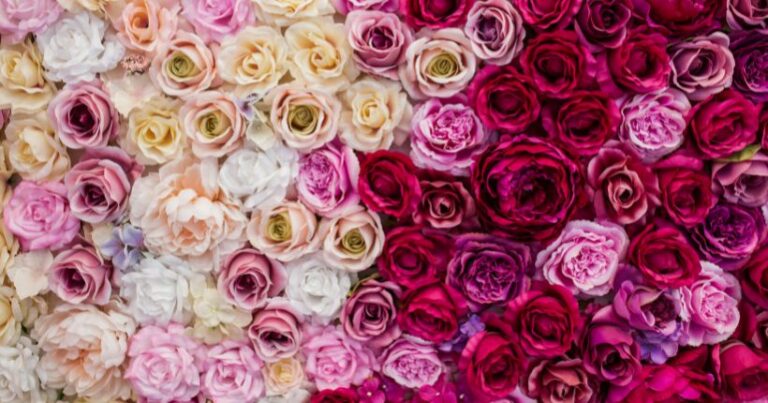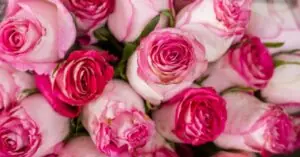Roses are everywhere, tucked behind ears, gracing dinner tables as centerpieces, sealed inside love letters. They’re one of the most recognizable flowers on Earth, but their beauty isn’t just visual. Behind every petal is a story, and behind every color, a message.
If you’ve ever stopped to wonder why roses carry such emotional weight, or what message you’re really sending when you hand someone a bouquet, you’re in the right place. Today we’re diving into the centuries of myth, tradition, and emotional flick behind roses’ meaning, and why it still matters today.
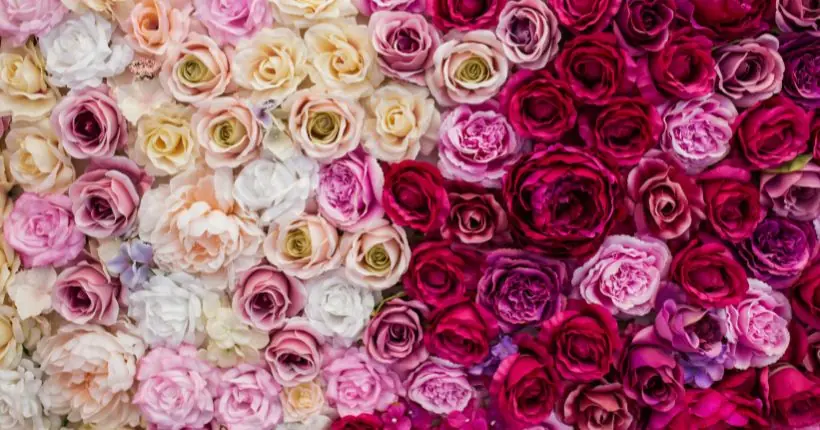
The Language of Roses: A Historical Perspective
Roses didn’t just bloom into our culture out of nowhere. Their symbolism took root long ago, nurtured by mythologies, religious beliefs, and human experiences across time.
Ancient Myths & Legends About Roses
In Greek mythology, roses were born from Aphrodite’s tears and the blood of her lover, Adonis, a pairing of beauty and tragedy. The Romans adopted this imagery, associating roses with Venus and often using them in their hedonistic feasts and love rituals.
Meanwhile, Persian poets likened the rose to divine beauty, often paired with the nightingale to symbolize unrequited love. In this tradition, the rose was both the goal and the wound, it represented longing, beauty, and the painful ache of desire.
In Norse mythology, some legends even suggest that the red rose grew from the goddess Freyja’s garden, symbolizing sensuality and fertility.
Roses in Religion & Spirituality
Roses show up again and again in religious symbolism. In Christianity, the red rose has been linked to the blood of Christ, while the white rose is often associated with the Virgin Mary, representing purity and divine love.
In Islam, roses are seen as a symbol of paradise and divine revelation. Sufi poets used the rose to express spiritual awakening, describing the bloom as both worldly and transcendent.
In Hinduism, roses are sometimes offered to deities during prayer rituals as a symbol of devotion, love, and respect.
How Roses Became a Universal Symbol of Love
Much of the rose’s modern romantic association stems from the Victorian era and its fascination with floriography, the language of flowers. In a time when emotions were buttoned up and expressions of love were discouraged in public, a single rose could communicate everything a letter dared not.
A red rose for passion. A pink one for admiration. A white one for pure intentions. And a yellow one, sometimes controversially, for jealousy, or friendship, depending on the context.
The practice spread fast. From French salons to British parlors, roses became the ultimate love letter, no pen required. And so began their reign as the flower of choice for lovers everywhere.
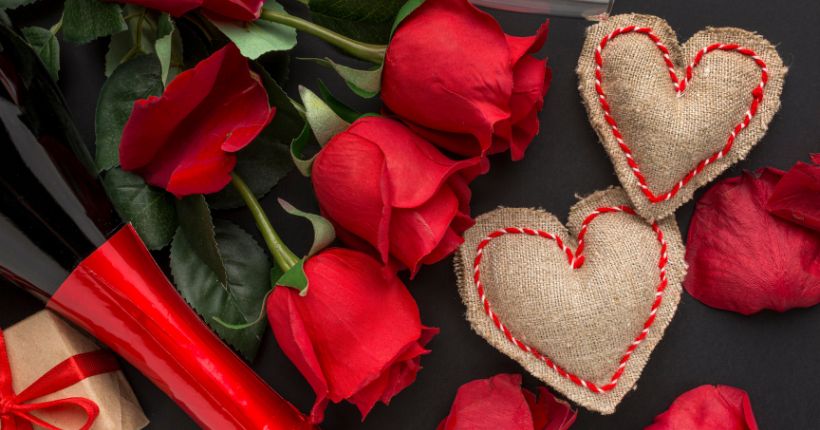
What Do Roses Symbolize?
Today, roses symbolize much more than love. They’re emotional shorthand for all kinds of messages, sometimes obvious, sometimes deeply layered.
Love, Passion & Romance (Common Associations)
Let’s start with the obvious. A rose is the international symbol of love, and not just in the romantic sense. It’s used to express affection, loyalty, even devotion between family and close friends.
A red rose still says, “I want you.” A pink rose says, “I care for you.” And even a coral rose can whisper, “I’m grateful.”
But beyond the color codes, roses remain the go-to flower for life’s big emotional swings: anniversaries, weddings, apologies, and reconciliations. Their softness represents vulnerability. Their fragrance evokes memories. And their bloom, when fresh, captures a moment of beauty before time does its work.
Roses as Symbols of Secrecy & Confidentiality
You’ve probably heard the phrase “sub rosa”, Latin for “under the rose.” It dates back to ancient Rome, where roses were hung above meeting tables to signify that whatever was said in that room was to be kept confidential.
To this day, roses carry that aura of secrecy. They’re the flower of hidden meanings, whispered affections, and quiet loyalties, which makes them not only romantic but also deeply personal.
So when someone gives you a rose in a moment that feels quiet or intense, take note. It might not just be a flower, it might be a secret message.
The Duality of Roses: Beauty & Thorns
Here’s what makes roses so human: they’re not just beautiful. They’re complicated. For every soft petal, there’s a thorn, and that’s part of what makes them so universally symbolic.
The rose reminds us that beauty can come with pain. That love requires vulnerability. That joy and sorrow often grow from the same stem. That life itself, is the best present that canbe gifted, but the life path is full of thorns that will take us to better times.
It’s why roses show up at both weddings and funerals. Why do we use them to say “I love you” and “I miss you.” They’re not one-dimensional. They’re everything at once, fragile and fierce, joyful and sorrowful, perfect and a little bit dangerous.
And that’s what makes the meaning of roses so powerful.
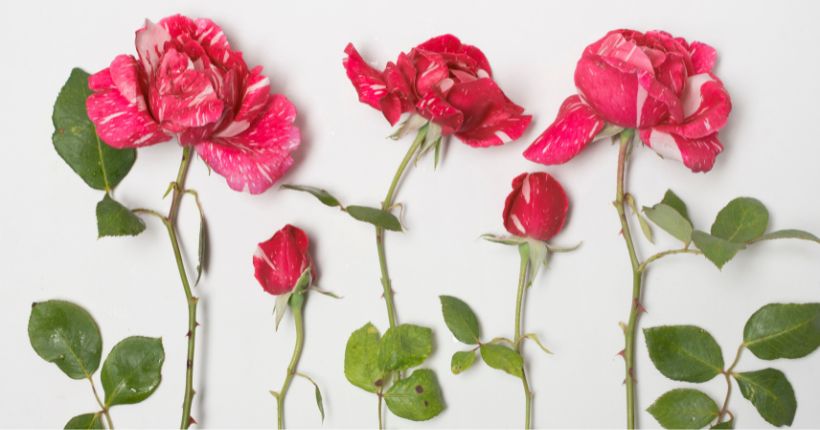
Decoding Rose Colors and Their Meanings
Each rose color holds its own whisper of meaning, quiet messages wrapped in petals. Here’s a brief look at what each shade might be trying to say:
Red Roses
- Love & Desire: The classic symbol of passionate love, red roses are for those ‘heart-racing’ moments.
- Respect & Devotion: A red rose can also show admiration, romantic or not.
- Best for: Anniversaries, declarations of love, and romantic milestones.
White Roses
- Purity & New Beginnings: Associated with weddings and fresh starts.
- Remembrance & Sympathy: Often used in funerals to express reverence and peace.
- Best for: Weddings, memorials, and spiritual occasions.
Yellow Roses
- Friendship & Joy: They radiate warmth and platonic love.
- Gratitude: Say thank you without romantic undertones.
- Best for: Friends’ birthdays, thank-you gestures, and celebrations.
Pink Roses
- Admiration & Grace: Sweet, sincere, and soft-hearted.
- Gratitude & Affection: Ideal for mothers, mentors, and best friends.
- Best for: Mother’s Day, thank-you bouquets, new relationships.
Orange Roses
- Enthusiasm & Fascination: A fiery blend of desire and joy.
- Excitement: A bold way to say, “You inspire me.”
- Best for: Promotions, milestones, bold romantic gestures.
Lavender Roses
- Enchantment & Love at First Sight: Dreamy and rare.
- Mystery & Majesty: Feels regal and spiritual.
- Best for: New loves, anniversaries, and whimsical events.
Blue Roses
- Mystery & The Impossible: Since they don’t occur naturally, they represent the unattainable.
- Rarity & Wonder: A quiet way to say “You’re one of a kind.”
- Best for: Unique relationships, dreams, and celebrations of individuality.
Black Roses
- Farewell & Endings: A dramatic goodbye, often used in mourning.
- Rebirth & Strength: Can also symbolize transformation and resilience.
- Best for: Memorials, breakups, gothic weddings, and personal growth.
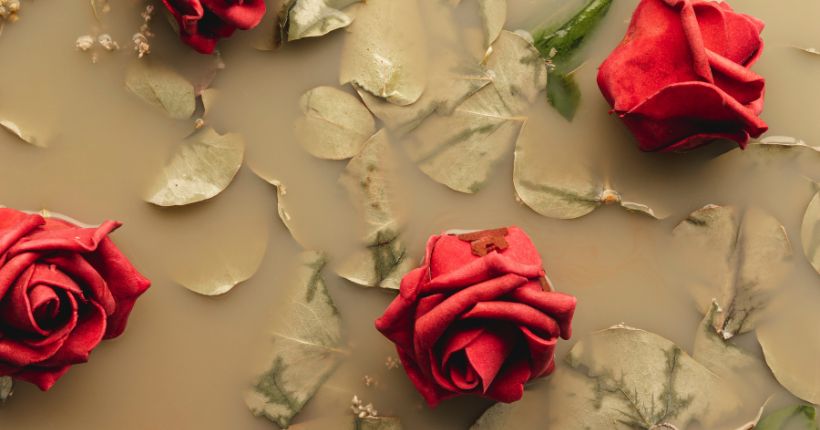
Roses in Different Cultures & Traditions
Roses carry profound significance not just in individual relationships but also in the collective traditions and stories of people around the world. From Western weddings to Eastern poetry, from ancient myths to modern rituals, the rose has been woven into the fabric of culture.
Roses in Western Traditions (Weddings, Funerals)
- Weddings and Love: In Western culture, roses are inseparable from romantic expression. White and pastel roses, in particular, have become bridal staples ever since Queen Victoria’s white rose bouquet set the trend in 1840. Red roses, immortalized by Shakespeare, embody passion, from Valentine’s Day bouquets to that single rose on a date.
- Funerals and Farewells: In mourning rituals, white roses symbolize purity and reverence, while red roses express enduring love. Military funerals may use red roses to honor valor. A yellow rose can mark friendship, and a pink rose gives thanks for a life well-lived.
- National Symbols and Heraldry: England’s Tudor Rose (red and white) remains a national emblem, while the rose is America’s national flower. The Catholic rosary itself derives from the term “rosarium,” a garland of roses offered in prayer. Roses appear in coats of arms across Europe and symbolize everything from joy to sanctity.
- Idioms and Practices: From the phrase “sub rosa” (in secret), to the reminder that “every rose has its thorns,” Western idioms capture the flower’s associations with secrecy, beauty, and bittersweet truth. “Stop and smell the roses” encourages appreciation of life’s fleeting joys.
Eastern Symbolism of Roses (China, Japan, Middle East)
- China: Roses represent beauty and prosperity. Historically grown in imperial gardens, they are symbols of yang energy, strength, love, and fortune. Red roses are lucky, pink roses express charm, and even myths exist about immortal black roses.
- Japan: In hanakotoba (flower language), red roses mean “I love you,” while white signifies innocence or loyalty. Yellow roses imply jealousy. Though not native to religious ritual, roses have been culturally adopted and are featured in anime, festivals, and romantic traditions.
- Middle East (Persian & Islamic Traditions): In Persian Sufi poetry, the rose is the beloved and the nightingale the longing lover. One myth says red roses were born from a nightingale’s bleeding heart. In Islam, roses are linked to the Prophet Muhammad and represent divine love. Rose water is used in spiritual purification, and the rose symbolizes both divine ecstasy and the trials of devotion.
These rich traditions show that across East and West, the rose is a mirror of cultural emotion, sometimes sacred, sometimes romantic, always deeply human.
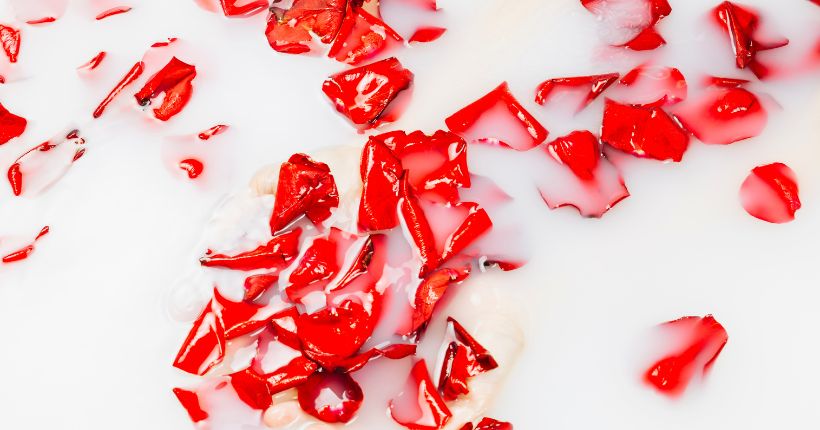
Modern Uses of Roses & Their Symbolism
Roses didn’t stay in dusty old poems. They’ve adapted, thriving in the stories we tell, the skin we ink, and the way we celebrate today.
Roses in Literature & Art
Roses have long been a muse for creatives, showing up in nearly every art form to symbolize the deepest of human emotions.
- Poetry & Fiction: Shakespeare often used roses to symbolize romantic tension, especially in Romeo and Juliet. Robert Burns’ “A Red, Red Rose” compares love to a fresh bloom, while Oscar Wilde’s “The Nightingale and the Rose” uses a red rose to symbolize selfless sacrifice. Even children’s literature like The Little Prince uses a rose as a metaphor for uniqueness and love.
- Visual Art: Botticelli’s The Birth of Venus rains roses from the heavens, celebrating divine beauty. Georgia O’Keeffe magnified rose petals to evoke femininity, while Dalí’s Meditative Rose suspended a single bloom in the sky, symbolizing purity and surreal love. From classical canvases to Instagram galleries, roses remain a timeless visual metaphor.
Roses in Tattoos & Their Hidden Meanings
Rose tattoos are more than decorative ink, they’re deeply personal expressions etched into skin, often layered with symbolism.
- Love & Memory: Many choose red rose tattoos to represent eternal love for a partner or family member. Memorial tattoos with white or black roses often signify grief and remembrance, blending beauty with sorrow.
- Strength in Pain: A traditional tattoo design features a rose pierced by a dagger, symbolizing resilience and the balance between beauty and suffering. It’s especially popular among those who’ve overcome emotional or physical hardship.
- Color Matters: Red roses speak to passion and romance; black denotes mourning or rebellion; pink reflects grace and gratitude. Blue roses suggest uniqueness or the pursuit of the impossible, a message popular among creatives or nonconformists. Each color tells a different chapter in the wearer’s story.
Why Roses Are Still the Most Popular Flower Today
Despite the rise of exotic florals and minimalist bouquets, roses remain the undisputed champion of the floral world.
- Timeless Beauty: Roses captivate across centuries. Their layered petals and intoxicating fragrance continue to define beauty standards. From designer fashion to perfume branding, their form is iconic.
- Versatility: No other flower adapts quite like the rose. With thousands of hybrid varieties in every color, size, and scent, roses can symbolize everything from gratitude to sympathy to wild, heart-thumping love.
- Cultural Icon: From emojis to national emblems, roses are everywhere. Social media platforms have cemented their appeal, rose tattoos trend on Instagram, and rose-themed filters highlight digital romance. Events like National Rose Month and massive rose festivals worldwide only reinforce their cultural dominance.
- Global Market Leader: Roses top the charts in the cut flower industry, with billions grown and shipped each year from hubs like Ecuador, Kenya, and the Netherlands. Around Valentine’s Day alone, over 250 million roses are produced and delivered globally, a testament to their unmatched popularity. The rose emoji (🌹) remains one of the most popular digital expressions of love and beauty, proving that this flower speaks volumes, whether it’s in a bouquet or a text. quite like the rose.
- Versatility: There’s a rose for every message, every mood, every moment.
- Cultural Icon: Roses thrive in art, politics, tattoos, and even emojis.
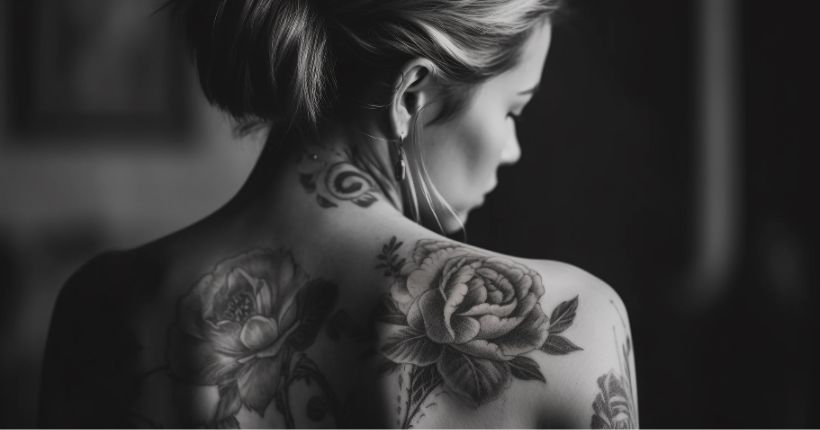
Conclusion
Whether it’s red for romance, white for purity, or lavender for the feeling you can’t explain, roses are more than flowers. They’re messengers. Each bloom delivers a sentiment in soft petals, and each color deepens the story.
The world’s love affair with roses isn’t just about how they look, it’s about what they say. And when it comes to decoding roses’ meaning, the beauty is in how perfectly they speak to our hearts.
As the saying goes, “The rose speaks of love silently, in a language known only to the heart.”
Now that you know the general meaning of roses, dive deeper into the symbolism behind each color:
- Red Roses Meaning
- White Roses Meaning
- Pink Roses Meaning
- Yellow Roses Meaning
- Blue Roses Meaning
- Purple Roses Meaning
- Orange Roses Meaning
- Black Roses Meaning
Each color tells a story, find the perfect one for your occasion.

